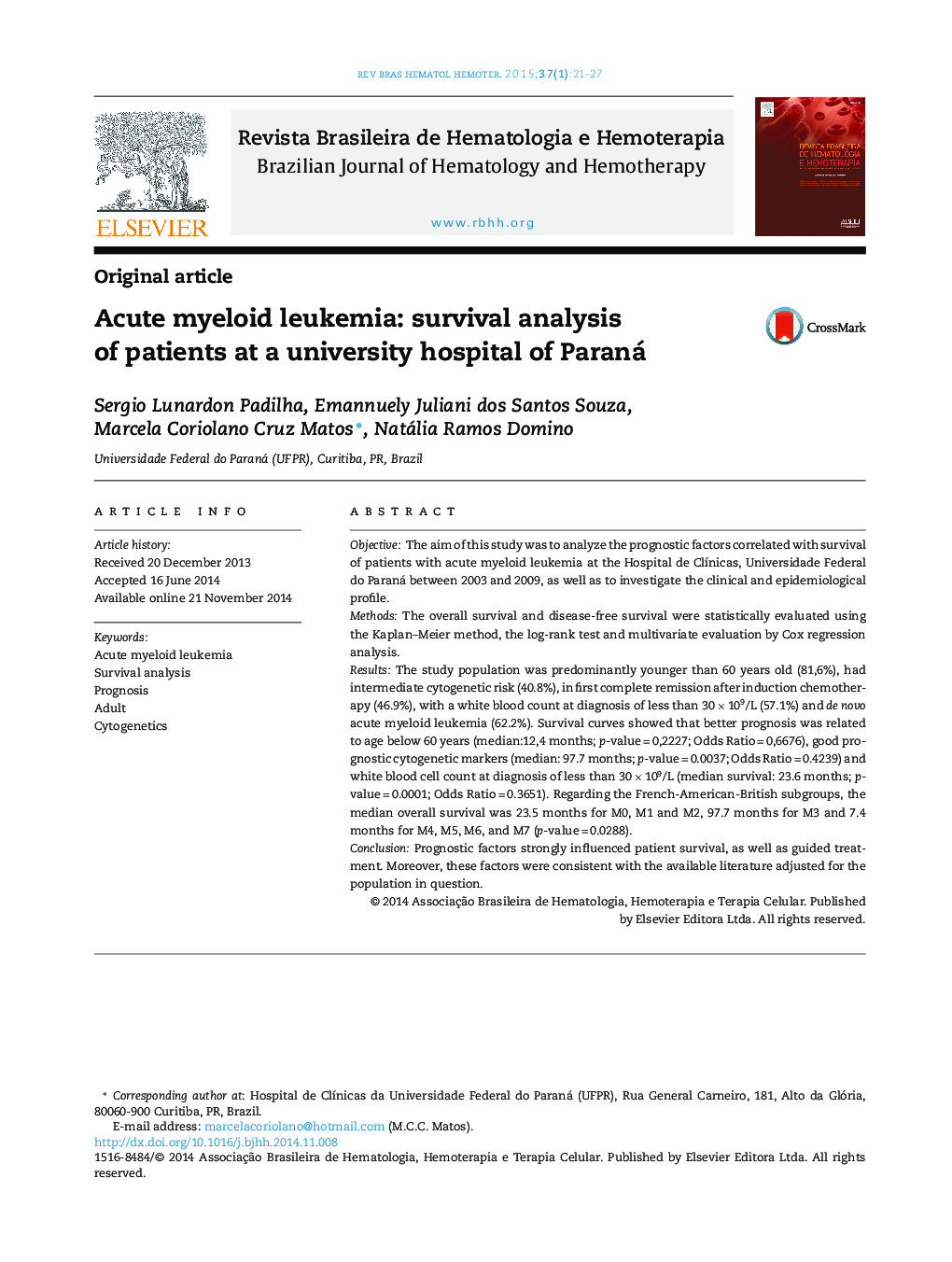| Article ID | Journal | Published Year | Pages | File Type |
|---|---|---|---|---|
| 3333046 | Revista Brasileira de Hematologia e Hemoterapia | 2015 | 7 Pages |
ObjectiveThe aim of this study was to analyze the prognostic factors correlated with survival of patients with acute myeloid leukemia at the Hospital de Clínicas, Universidade Federal do Paraná between 2003 and 2009, as well as to investigate the clinical and epidemiological profile.MethodsThe overall survival and disease-free survival were statistically evaluated using the Kaplan–Meier method, the log-rank test and multivariate evaluation by Cox regression analysis.ResultsThe study population was predominantly younger than 60 years old (81,6%), had intermediate cytogenetic risk (40.8%), in first complete remission after induction chemotherapy (46.9%), with a white blood count at diagnosis of less than 30 × 109/L (57.1%) and de novo acute myeloid leukemia (62.2%). Survival curves showed that better prognosis was related to age below 60 years (median:12,4 months; p-value = 0,2227; Odds Ratio = 0,6676), good prognostic cytogenetic markers (median: 97.7 months; p-value = 0.0037; Odds Ratio = 0.4239) and white blood cell count at diagnosis of less than 30 × 109/L (median survival: 23.6 months; p-value = 0.0001; Odds Ratio = 0.3651). Regarding the French-American-British subgroups, the median overall survival was 23.5 months for M0, M1 and M2, 97.7 months for M3 and 7.4 months for M4, M5, M6, and M7 (p-value = 0.0288).ConclusionPrognostic factors strongly influenced patient survival, as well as guided treatment. Moreover, these factors were consistent with the available literature adjusted for the population in question.
